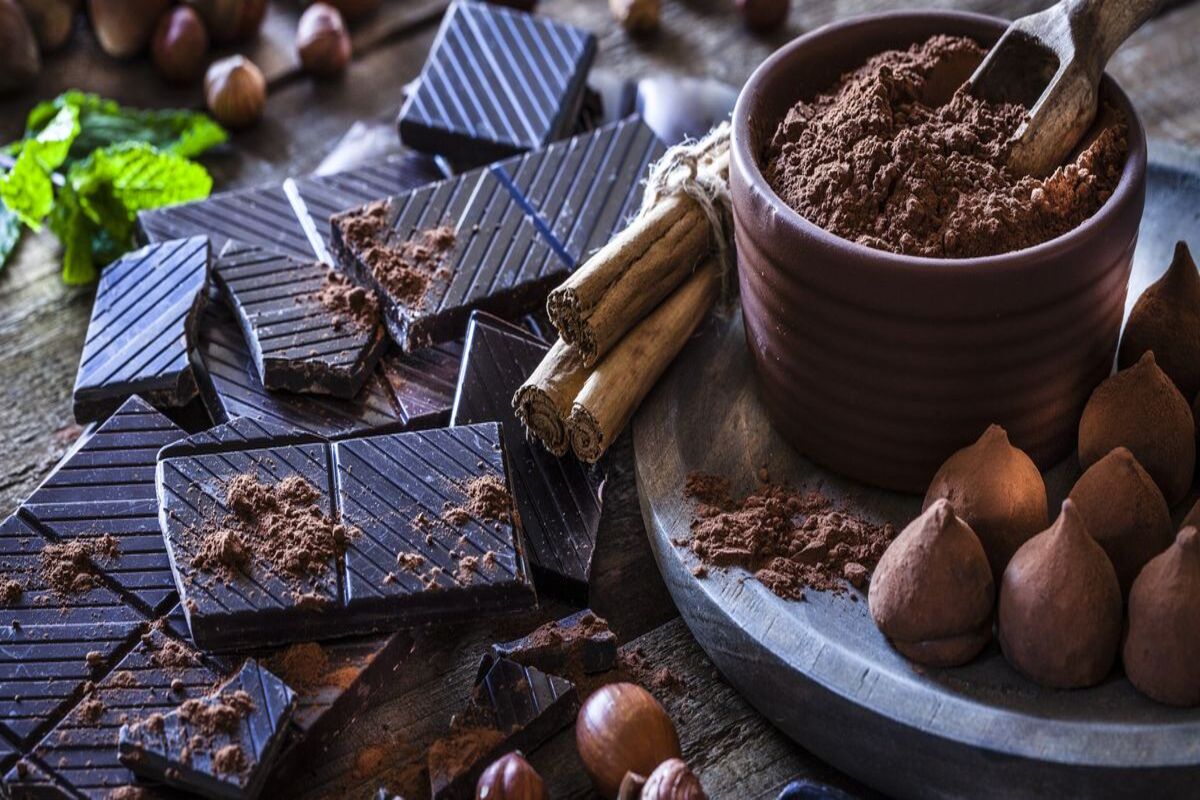Chocolates worth Rs 17L stolen from Lucknow godown
The godown belongs to businessman Rajendra Singh Siddhu, who is a distributor of a multinational chocolate brand in the city.
The packaging and wrapping of a chocolate is not mainly for decoration, whereas; it is there to protect the chocolate from light, other harmful elements and insects.

Photo- iStock
None of us would deny the fact that chocolates are delicious, but, what makes a chocolate so delicious? What is a chocolate? In Australia, chocolate is defined as ‘a confectionery product characterized by the presence of cocoa bean derivatives,’ namely cocoa liquor, cocoa butter and cocoa solids. However, the percentage of these components may vary between two products both sold as a chocolate. Chocolate can either be a solid, a liquid or a paste, and, along with the cocoa solids and cocoa butter, a chocolate also contains some variety of added sweetener, i.e. sugar or condensed milk, to counterbalance the bitter taste of cocoa. Modern commercial varieties of chocolate can also include added flavors, preservatives, milk solids and modifiers.
Cacao, which is also known as cocoa; is a part of Cacao Tree (Theobroma Cacao), which grows in warm, tropical climates within 20 degrees of the equator. Each Cacao pod contains around 30-45 seeds (often called beans), and chocolate is made from the nibs of these seeds—the cotyledons.
Advertisement
Aren’t you wondering about the fact being mentioned above that, there’s a chemistry involved in the process of chocolate making. There is a lengthy process involved in the making of a chocolate. Chocolates are not available as easily as first ingredient needed in the process of chocolate synthesis is. Yes, we are talking about cacao seeds-primary ingredient needed to prepare a chocolate. These seeds taste extremely bitter and rough. To obtain an admirable flavor, innumerable chemical transformations are involved in the process.
Advertisement
Fermentation generally lasts for 5-7 days. After piling the beans in heaps or after placing these beans in special boxes, the microorganisms quickly remove the bean pulp. Afterwards, yeasts grow on the pulp and convert the sugars into ethanol. As bacteria move in they oxidize the ethanol to acetic acid and then to carbon dioxide (CO2) and water. As a result, heat is produced which raises the temperature. The pulp breaks down and lactic acid and acetic acid are produced. The acetic acid eventually kills the bean, which results in its cell walls breaking down and the mixing of several previously separated substances. This process results in changes within the bean, known as the curing process. It involves enzyme activity, oxidation and the breakdown of proteins into amino acids. This stage develops important flavor precursors, which are the initiation of the unique chocolate taste and aroma. It also browns the beans.
After completion of the fermentation process, the beans are cleaned, sorted, graded and then roasted. During roasting the sour vinegar smell produced by fermentation is removed. The bean shells become brittle and the color of the beans turn dark. This process converts the flavor precursors within the bean into chemical compounds such as aldehydes, esters, lactones, and pyrazine, which give chocolate its aroma and flavor.
A winnowing machine removes the bean shells and now the cacao nib is only left.The nibs are then ground and liquefied into cocoa liquor. Heavy-duty presses can further process and separate the liquor into either fat-rich cocoa butter or cocoa solids (that are ground to make cocoa powder).
In this process the cocoa butter is added back into pure liquor, to make different varieties of chocolates. Other ingredients such as sugar, vanilla, milk solids, additional fats (found in cheaper chocolates) and other flavors are also added during this step.
The blended chocolate can still be rough and a bit gritty. Conching (refining) slowly mixes the ingredients together under heat while at the same time continuously grinding them to end up with a smooth finish. This breaks down the sugar and cocoa into tiny particles. The longer the conching machine works on refining the chocolate, the smoother is the end product. Cheaper chocolate may be conched for around 4 hours, while the more expensive varieties can take up to 72 hours.
It is the process of varying the temperature at which chocolate is cooled. It is the essential step in producing chocolate’s most-desired qualities. Its smooth, shiny and rich texture and the way it melts in your mouth are because of the tempering process.
It is a chemical process of alkalizing cocoa solids to make them less bitter and less acidic. It makes the cocoa appear even darker, and destroys some of the extra flavonoids found in truly dark chocolate.
The packaging and wrapping of a chocolate is not mainly for decoration, whereas; it is there to protect the chocolate from light, other harmful elements and insects.
Chocolate is widely known as the ‘love drug’, the ‘happiness drug’ and the ‘pleasure drug.’ Chocolate contains various ingredients, chemicals and compounds that have been shown to affect the brain and body in pleasurable and positive ways. Let’s see how:
(With inputs from: Australian Academy of Science)
Advertisement